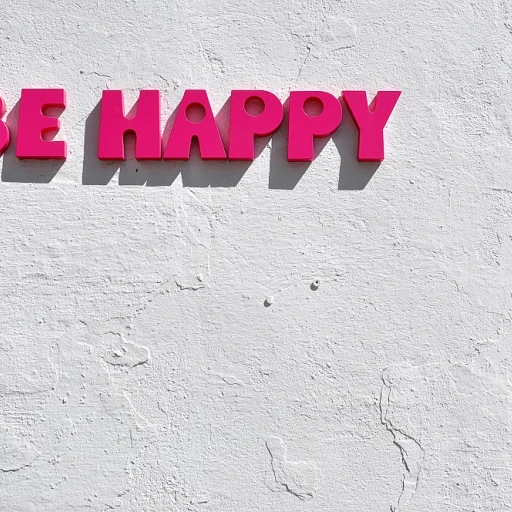Decoding the Resume: More Than Just a Document
Unlocking the Potential of Your Professional Story
A resume is far more than a simple list of jobs and educational credentials; it's the narrative of your professional journey and a strategic tool for career advancement. In a crowded job market, the power of a well-crafted resume can't be overstated—it is the bridge between a candidate's past experience and future ambitions. Crafting a resume that stands out requires a blend of introspection, precision, and an understanding of the subtleties of resume writing.
Embracing a Strategic Approach to Resume Building
Developing a resume is a reflective process, one that prompts you to sift through the chronicles of your work history and identify the moments that truly define your career. The act of selecting and prioritizing experiences means engaging in a strategic exercise that aligns with your overall career plan. For action-oriented insights on constructing a dynamic professional path, explore strategic pathways for professional growth.
Resume as a Career Trajectory Canvas
The resume serves as a personal branding instrument—a canvas where you paint your career trajectory with the broad strokes of your work history, complemented by the finer details of your specific achievements. The artistry involved in crafting this document lies in its ability to succinctly convey your value proposition to potential employers. It's crucial for job seekers to understand the nuances of presenting their work experiences in a way that resonates with hiring managers and aligns with their career aspirations.
Deciphering the Language of Achievement
In distilling your work history into a coherent and captivating resume, selecting achievements and quantifiable results is critical. This means spotlighting moments of triumph and transformation. Job seekers frequently overlook this process, missing an opportunity to illustrate the impact they've had in their roles. By translating your day-to-day tasks into compelling accomplishments, you elevate your narrative from a series of job descriptions to a story of professional evolution and impact.
Navigating the Requirements of the Modern Job Hunt
In the digital age, understanding the technical elements that affect a resume's success, such as Applicant Tracking Systems (ATS), is as important as the content itself. An ATS-friendly design can enhance your resume's readability, thus optimizing it for the initial digital screening that precedes human eyes. Dissecting the scientific side of resume formats and how they perform under ATS scrutiny gives job-seekers a competitive edge and will be further explored in the subsequent sections.
Constructing a Document That Speaks Volumes
Ultimately, a resume must articulate the breadth and depth of your professional experience. It is the synthesis of who you are as a professional—highlighting your skills, achievements, and the unique value you bring to the table. This document is a testament to your career thus far and a beacon signaling your readiness for future challenges and opportunities. Remember, each section and bullet point plays a part in shaping the perception of your professional saga, making every word count in telling your success story.
The Backbone of Every Resume: Structuring Your Work Experience
Dissecting Work Experience: The Core of Your Professional Persona
When it comes to resumes, if there's one element that commands the spotlight, it's undeniably the work experience section. This portion serves as the pulse of your professional past, narrating the story of your career trajectory. The statistics are clear, as affirmed by strategic career insights, that job seekers have mere seconds to impress a hiring manager. Hence, how one outlines their work history can make or break the opportunity for an interview.
Chronological or Functional? Choosing the Right Strategy
The classic chronological resume format, with its clear progression of roles, is favored by many as it provides recruiters a timeline of your professional ascent. According to a report by the National Employment Association, recruiters prefer chronological resumes 75% of the time. Yet, the functional resume format has its niche, especially for those with gaps in employment or a career change in mind. Certified professional resume writers, like Kellie Hanna, CPRW, emphasize the importance of aligning the format with your career narrative to enhance readability and relevance.
Articulating Achievements: The Proof Is in the Percentages
Narrating your work history is not just about listing duties; it's about highlighting achievements. Studies suggest that resumes featuring quantified accomplishments significantly increase interview chances. For instance, stating that you 'increased sales by 20%' is an impactful testament to your ability. Data from career centers across the U.S., such as those at Temple University, indicate that candidates who use percentages and figures to demonstrate their impact are 40% more likely to catch an employer's attention.
Aligning with Applicant Tracking Systems (ATS)
In today's tech-savvy job market, resumes must also pass the scrutiny of Applicant Tracking Systems. A study by CareerBuilder found that nearly 60% of employers use ATS to filter candidates. Crafting an ATS-friendly resume involves strategic keyword placement relevant to the job title and industry. However, this should not come at the expense of readability and human appeal – maintaining a balance is crucial for ATS and human eyes alike.
Adopting Resume Architecture: Structuring for Success
As each role unfolds in your work experience, it's essential to structure the information strategically. This means prioritizing your most notable and relevant experiences. Resume samples curated by professional resume writers demonstrate that focusing on recent and relevant jobs, usually the past 10-15 years of your career, is most effective. Older roles can be summarized or omitted altogether, depending on their relevance to the position applied for.
Emphasizing Progression: Navigating Through Job Titles
Job titles can serve as landmarks in your career's landscape. A LinkedIn study revealed that clear job title progression can indicate career growth and stability, traits that are attractive to potential employers. It's advisable to ensure that your work experience section illustrates a logical and upward trajectory, reflecting a growing skill set and leadership capacity.
Conclusion
Ultimately, the work experience section of your resume is a storytelling tool, one that presents your professional journey in a way that resonates with employers. It's this narrative that can set the stage for a new chapter in your career, clearing the pathway to an interview and, subsequently, the job you aspire to secure. Crafting this section with a thoughtful strategy, blending in the quantitative accolades with qualitative personal growth, can lead to a document that truly represents your professional identity.
The Psychology of Resume Formats: Performing Under ATS Scrutiny
Understanding the Mechanics of ATS
A resume isn't just a list of job titles and skills; it's your professional fingerprint in the world of automated hiring. To make an impact, it's paramount to understand how Applicant Tracking Systems (ATS) parse and rank resumes. Bearing in mind that over 98% of Fortune 500 companies use ATS, according to Jobscan, your resume must gracefully pass through these digital gatekeepers to reach human eyes. Think of ATS as sieves that filter out unqualified candidates based on relevancy, formatting, and keywords.
Optimizing for ATS Algorithms
For your resume to stand out, tailoring content to the job description is vital. ATS algorithms are programmed to pinpoint specific keywords and phrases related to the job. Crafting an ATS-friendly resume starts with mimicking language used in the job listing and incorporating industry-specific terms. But caution is advised; overstuffing your resume with keywords can backfire, leading to an impression of manipulation rather than qualification.
Resume Format and ATS: A Delicate Balance
Selecting the right resume format is as strategic as the content it holds. The chronological format, touted as the best resume format for ATS, showcases your work history and progression. Meanwhile, the functional resume format, which emphasizes skills over chronological work history, often raises ATS compatibility concerns due to its unconventional structure. Combining elements of both, the hybrid format, might just be the solution when balancing human and algorithmic readability.
The Fine Line of Creativity vs. Compatibility
Amidst the quest to impress algorithms, the human aspect of job applications shouldn't be forgotten. Striking a balance between a great resume that resonates with both ATS and hiring managers is the litmus test. While ATS requires simplicity, hiring managers look for personality and clarity. Engaging the reader with a dynamic opening, bullet points to showcase achievements, and a narrative that weaves your job experiences into a compelling story are the finishing touches to crossing the algorithmic threshold with style.
Real-World Applications of ATS-Friendly Resumes
As we hover over taking the leap into an ATS-optimized resume, let's consider the example of Kellie Hanna, CPRW, a career advice expert who advises using a blend of common sense and strategy. By following LinkedIn Bold Pro Kellie's insights, job seekers can craft resumes that meet both technological and human requirements, pushing the envelope in today's competitive job market. Whether it’s a marketing manager or a healthcare professional, the approach remains consistent: be visible to ATS without compromising your unique career narrative.
Strategically Tailoring Your Resume: Customization Is Key
Why Customization is the Heartbeat of a Winning Resume
Every job is unique, and so should be every resume. A customized resume demonstrates an awareness of the specific job requirements and an effort to align your skills and experiences with them. In fact, Kellie Hanna, a certified professional resume writer (CPRW), highlights customization as a non-negotiable in the current job market. It's not just about a list of past roles; it's strategically presenting your journey tailored to your future employer's landscape.
Mastering the Art of Resume Customization
Customizing your resume doesn't mean overhauling it for every application. Start with a strong base of work experience and skills, and tweak it to mirror the language and priorities of the job description. Research suggests that a resume aligned with job-specific keywords has a better chance of passing applicant tracking systems (ATS) and catching the hiring manager's eye. Using an ATS-friendly resume format ensures the key aspects of your resume won't get lost in translation.
Positioning Yourself with Precision
To position yourself effectively, reflect on the nuance of your roles. Go beyond stating your job title and duties; emphasize the contributions that best resonate with your desired role. What problems did you solve? What initiatives did you lead? Surveys indicate that HR managers favor resumes that showcase quantifiable achievements over a mere description of tasks. This precision in choosing your content can be the deciding factor that upgrades your resume from good to great.
Case Studies: Learning from Resume Success Stories
Examining resume examples from successful job seekers in your field can illuminate effective customization techniques. Many professional resume writers and career coaches share success stories that reveal patterns in successful job applications. For instance, a case study might detail how an applicant's switch from a chronological resume format to a functional resume format better highlighted their project management skills and led to a career boost.
Aligning with Career Trajectories: Not Just for Managers
Whether you're a seasoned manager or entering the workforce, customization is equally essential. Per the New York-based CPRW experts, it's about adapting your resume to align with your career trajectory. Professionals with years of work experience need to curate their histories to stay relevant, while newcomers can benefit from emphasizing skills and potential. In both cases, it's the strategic packaging of your work history and potential that persuades.
Overcoming Common Customization Hurdles
While the benefits of resume customization are clear, challenges exist. One might hesitate to omit significant but irrelevant experience or struggle to find the precise language that resonates with the job seekers' aspirations. Here, free resume builder tools and resume samples can provide a starting point, but for nuanced guidance, turning to certified professional resume writers may be a wise investment. They leverage industry insights to highlight the most impactful elements of your professional story.
Powerful Phrasing: Choosing the Right Words to Describe Your Experience
The Art of Dynamic Verbiage: Crafting Your Work Narrative
A resume isn’t simply a chronicle of job titles and duties; it's a platform to convey your personal brand and career narrative. Choosing the right words to describe your work experience is paramount in making an impact on hiring managers. Striking the correct balance between professional jargon and accessible language can turn a bland resume into a compelling biography of your professional journey.
Concrete Examples Coupled with Quantifiable Achievements
A common advice echoed by certified professional resume writers like Kellie Hanna, CPRW, is to contextualize your roles with concrete examples that exhibit your skills and abilities. Job seekers are often told that resumes should not just list duties, but highlight achievements with numbers to back them up. A study by Zippia suggests that resumes with quantified achievements significantly boost the probability of landing an interview.
Striking the Balance: Powerful Verbs and Effective Modifiers
The anatomy of a great resume is often judged by its verb usage. Powerful action verbs illuminate your contributions while avoiding wasteful verbosity. The key is to pick verbs that are not only impactful but also accurately depict your role. The use of modifiers should be judicious—enough to deliver precision without overshadowing the verbs themselves.
Harmony of Brevity and Detail: Knowing What to Include
Writing a resume is an exercise in strategic summarization. The goal is to find a harmonious balance between being succinct and providing just enough detail to pique interest. Experts suggest that a well-phrased bullet point should not exceed two lines of text to maintain reader engagement.
Industry Jargon vs. Layman’s Terms
Every industry has its lingo, and while it's important to demonstrate expertise, overusing jargon can make your resume incomprehensible to those outside your field. The American Management Association highlights the importance of tailoring your resume to be understood by non-expert members of hiring committees, recommending the use of widespread business language.
ATS-Friendly Language: Getting Past the Bots
Understanding applicant tracking systems (ATS) is critical. These systems often screen resumes before they even reach human eyes. The National Resume Writers' Association reports on the significance of utilizing ATS-friendly keywords and phrases to get your file through the initial screenings. This is where the judicious use of job title keywords and skill-related phrases comes into play.
Conveying Evolution Within a Role
The language of your resume should also depict progress and development within your career. As opposed to static descriptions, it's beneficial to showcase how you've evolved or taken on increasing responsibilities over time. This weaving of a professional growth narrative can be particularly engaging when viewed within the chronological resume format.
Expert Recommendations: Pepper Your Phrases with Precision
Endorsements from industry leaders and professional resume writers suggest that the art of resume writing is in the precision of your language. Books such as 'The Elements of Resume Style' by Scott Bennett offer detailed guidance on word choice that has authenticity, impact, and clarity.
Avoiding Cliches: Originality Wins Interviews
It's easy to fall into the trap of using cliches or worn-out phrases when describing your past roles. Good resumes, however, are distinguished by their originality and fresh approach. The Harvard Business Review discusses the negative impact of cliches and emphasizes the importance of authentic expression.
Design Dynamics: Picking a Template That Tells Your Story
Illustrating Your Professional Narrative with the Right Template
In the realm of job hunting, your resume isn't just a list of jobs and education, but a reflection of your professional journey. The template you choose speaks volumes before a single word is read. It's a visual handshake, an immediate impression formed in the recruiter's mind,.
The Interplay Between Design and Readability
The aesthetic appeal of a resume cannot be understated. Recruiters spend, on average, a mere 6 seconds glancing at a resume before deciding its fate. In this fleeting timeframe, a well-organized, visually appealing template can catch the eye and encourage a closer look. A cluttered or overly complex layout, however, might head straight to the 'no' pile. It's a delicate balance between personality and clarity that can tip the scales in your favor.
For instance, studies suggest that bulleted lists, consistent font usage, and strategic bolding can significantly heighten the readability of a resume, directing attention to key achievements and skills.
Matching Templates to Industry Norms
Selecting a resume template should not be a one-size-fits-all approach. The cultural and stylistic expectations of your target industry play a critical role. Tech companies might appreciate modern, creative layouts, while law firms usually prefer traditional, conservative styles. To illustrate, a survey by Saddleback College's Career Center indicated that 78% of employers in the creative industry favor resumes displaying originality and design skills, while technical fields prioritize content clarity and precision.
Understanding ATS-Friendly Formats
No matter how striking a resume looks, it must pass the Applicant Tracking Systems (ATS) test. These bots scan and parse resumes, seeking predefined keywords and phrases indicative of a suitable candidate. Neglecting an ATS-friendly format may render your resume invisible, no matter your qualifications. Opt for straightforward, no-nonsense templates that avoid graphics and tables, which can confuse ATS algorithms, thus ensuring your vital details remain spotlighted.
Infusing Personal Branding with Template Choice
Think of your resume as a personal brand showcase. Choosing a template congruent with your brand can help you plant a flag in the minds of prospective employers. If 'meticulous organizer' is what you aim to project, a clean, orderly template is your ally. If 'innovative problem-solver' is your brand, perhaps a template with subtle, creative touches is the right pick. Remember, consistency across your professional resume, cover letters, and digital profiles solidifies your professional imagery.
Real-life Success Stories of Template Impact
Anecdotes from certified professional resume writers like Kellie Hanna highlight the transformative power of a well-chosen template. Kellie recalls empowering a client to move from a mid-level manager to a C-suite executive by restructuring the first impression made through a strategic resume overhaul. The new template underscored leadership experience, showcased a track record of success, and was compatible with ATS – a triple win that landed the individual several interviews and, eventually, an executive role.
In summary, the ideal template for your resume is more than just a framework; it narrates your story before you've spoken a word. While the content remains king, the crown it wears begs careful consideration. A well-chosen template is the silent ambassador of your professional saga. Harness it to usher your resume through the door, permitting your experience, skills, and achievements to do the rest of the talking.
Expert Insights: Learning from Proven Resume Examples
Charting Success with Proven Resume Examples
Ever wondered what sets a standout resume apart from the rest? It's the rich vein of strategy mined from expertly crafted examples. By studying resumes that have opened doors to competitive positions, aspirants can distill invaluable tactics for their own use. Certified Professional Resume Writers (CPRWs) like Kellie Hanna underscore the power of a well-structured resume in speaking volumes about a candidate's prowess. Kellie, a CPRW and a career advice expert, offers insights into crafting documents that resonate with hiring managers and bypass the automated filters of Applicant Tracking Systems (ATS).
Decoding Excellence in Resumes
Data from various studies, including those by leading job boards, reinforces the importance of aligning your resume with the desired traits in a candidate. Reports suggest using specific job titles and relevant keywords can increase your resume's visibility. For instance, mirroring the terminology of the job listing can make a significant difference, giving you an edge in the initial screening process.
Resume Templates as Strategic Tools
While creativity has its place, when it comes to resumes, efficiency is key. Templates provide a foundation, guiding users to present their work history and skills succinctly. Whether you choose a chronological or functional resume format, the mould you pick must serve as a narrative of your professional journey. According to the U.S. Bureau of Labor Statistics, a well-chosen template can help highlight career progression and avoid common pitfalls that might not be evident to the untrained eye.
ATS-Friendly Resumes
Navigating the algorithmic gatekeepers requires a meticulous approach. Studies have demonstrated that up to 75% of resumes never reach human hands due to ATS rejections. To achieve an ATS-friendly resume, Temple University’s Career Center suggests favoring simplicity over complexity in format and design, ensuring critical information is not overlooked by software.
Real-World Resume Success Stories
Case studies from job seekers who landed their dream roles after revamping their resumes can serve as a blueprint for others. In sectors from Healthcare to Google Docs' tech spheres, real-life examples demonstrate how a strategic mix of skills, experience, and a touch of personal branding sets candidates apart.
Leveraging a Professional's Touch
Engaging with professional resume writers or leveraging resources like LinkedIn's Bold Pro can provide an added layer of finesse. With years of work experience distilled into a document, a professional resume showcases not just where you've been, but the trajectory you're poised to follow. It's not about summing up the past; it's about framing your future potential.
The Transformational Cover Letter
While a resume is foundational, your cover letter is the handshake – the personal introduction that can align your experience with the company's direction. Cover letters that complement and elevate a resume are like the strategy behind a well-executed business plan: they require insight, focus, and a narrative that connects the dots between your skills and the employer's needs.
Bridging Resumes and Cover Letters: Crafting a Cohesive Application
Harmonizing Your Personal Brand: The Art of Matching Resumes with Cover Letters
Your resume has spoken: a narrative of rigor, a chart of accomplishments, and a testament to your professional journey. But the conversation isn't complete without its counterpart, the cover letter, to illuminate the nuances of your story. Approaching both with a strategic mindset not only showcases your qualifications but also reveals your personal brand and career aspirations.
Fine-Tuning Your Narrative Pitch
Like a good resume, every cover letter offers a platform to echo your work ethic and values. It’s critical that the tone, style, and messaging in your cover letter are complementary to your resume, forming a coherent, branded package. Think of your cover letter as the pitch to your resume's data fact sheet—it breathes life into the percentages and figures, providing context and personality.
Best Practices for Aligning Documents
When crafting a cover letter, absorption in the narrative allows job seekers to expand beyond bullet points, projecting strategic career aspirations and highlighting interpersonal prowess. The best cover letters don’t just rehash a resume’s content; they extrapolate key themes, creating a cohesive story. Pull from the same palette of buzzwords and industry jargon used in your resume to paint an elegant, matching picture.
Captivating Case Studies: Learning from the Best
Case studies from certified professional resume writers like Kellie Hanna and bodies such as LinkedIn's Career Center illustrate effective alignment between resume and cover letter. These resources underscore the importance of demonstrating tangible results with a blend of resume examples and a touch of narrative flair—a method that resonates with both applicant tracking systems (ATS) and hiring managers.
The Dynamic Duo: ATS and Human Eyes
Your cover letter must complement your resume in substance and form: readable by an ATS yet engaging for a human evaluator. This means using a format that allows ATS algorithms to interpret information smoothly, yet flexible enough to showcase your individuality. Clarity and conformity to ATS-friendly structure are not mutually exclusive with creative expression.
A Platform for Soft Skills and Cultural Fit
A resume might showcase your technical prowess, but a cover letter unveils your soft skills and adaptability to company culture. It serves as a platform for expressing your communication skills, enthusiasm, and professional philosophy, which may be the deciding factor for a manager considering multiple candidates with similar work histories.
Expert Integration Techniques
Experts recommend specific strategies to tie your resume to your cover letter, including linking achievements to broader competencies and company goals. Dive into the detailed examples, such as the Google Docs templates or the polished aesthetics of a Healthcare resume, to grasp the visual and contextual harmony great resumes and cover letters share. Promoting a balance of design and content uplifts the application, making it stand out in a sea of job seekers.
Conclusion: A Synchronized Symphony
Job titles and years of experience are not the be-all and end-all of an application; how you communicate your story and potential fit within a team equally impacts the perception of the hiring manager. Crafting a resume and cover letter that sing the same melody ensures a robust and harmonious brand identity, propelling you towards future career successes.

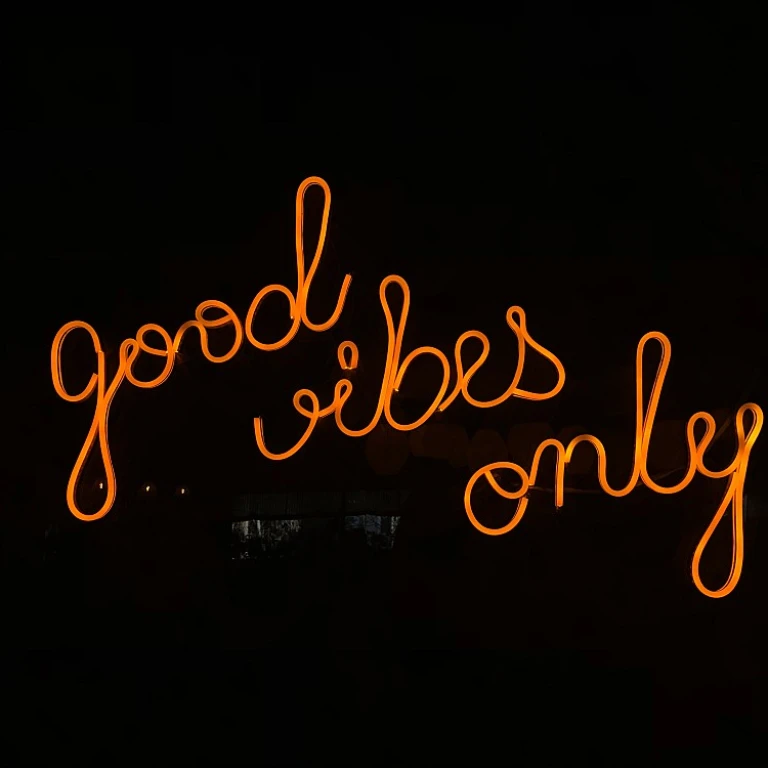

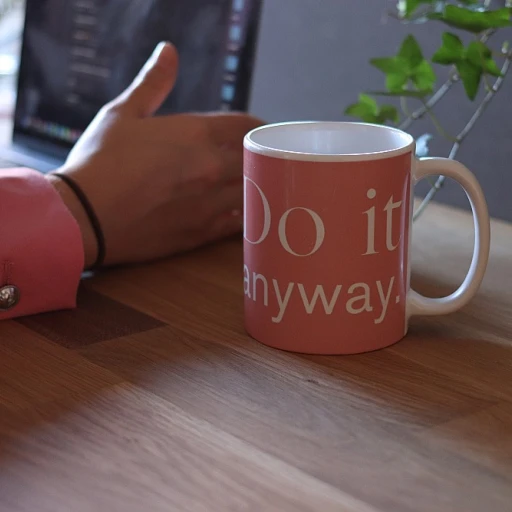

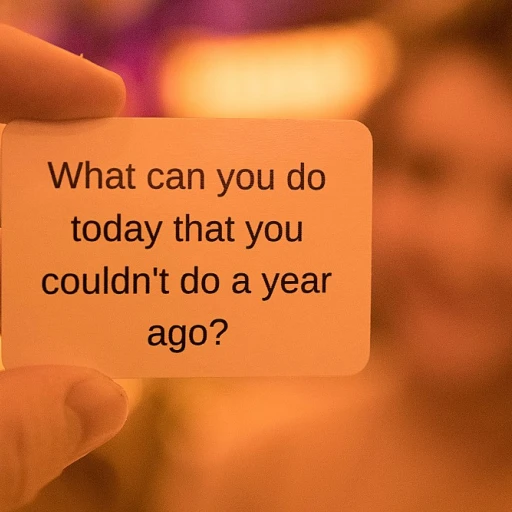

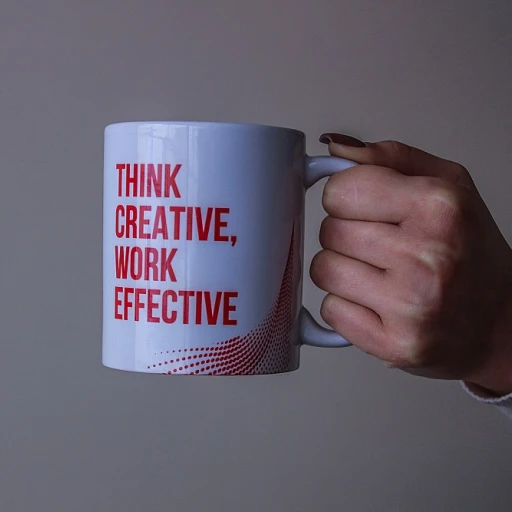
-large-teaser.webp)




